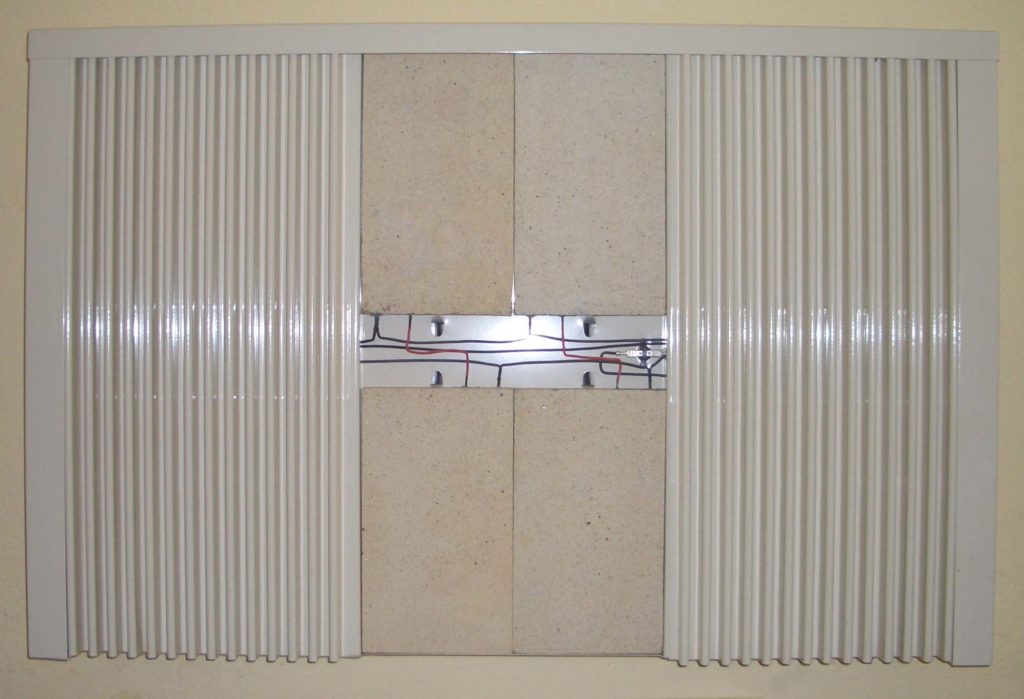Our German electric Chamotte Clay core heating is very efficient. Here is how they work. Based on a heating system dating back thousands years called Kachel Ovens ,(tile ovens in English) or Masonry heaters. Basically they started as wood burning stoves which were designed to retain and radiate heat.
Our Chammotte (Fire clay in English ) heater utilise these properties in a modern setting.
The secret to the low running costs of these radiators:-
Inside each heater is a series of refractory clay blocks. There are up to twenty Independent blocks in each radiator.
Each Block has encased within it an air tight heat element that heats up very quickly, typically in just a few minutes… It then holds on to heat for long periods thereafter.
As the blocks get hot the heat is transferred into the radiator body, which in turn sets off the natural radiant and convection heater process…
Because of the construction and because they are water tight and air tight, they have a virtually unlimited life expectancy
The technology within the radiator for heat conservation and heat distribution capability is incredible and customers report just a cosy, cosy comfort and savings on their fuel bills!
Once the room reaches the desired temperature a thermostat turns the heater off, but the room temperature doesn’t plummet like with conventional heating, instead the room remains warm using the stored heat.
Because of this storage capability test show the heater might only draw electricity for 15 to 20 minutes per hour depending on the insulation levels in the room.

Room is then heated by predominantly radiant heat
The saving on running costs are considerable.
Imagine a two kilowatt heater, which is about the average requirement for a living room. Lets assume average cost per unit for electricity fifteen pence. So our German , heater, if on continually would cost thirty pence an hour to run. If that heater was only on for twenty minutes per hour, once the room was up to temperature, heating the room on retained heat the rest of the time, then the running cost would only be one third of the hourly cost which is only ten pence per hour.
